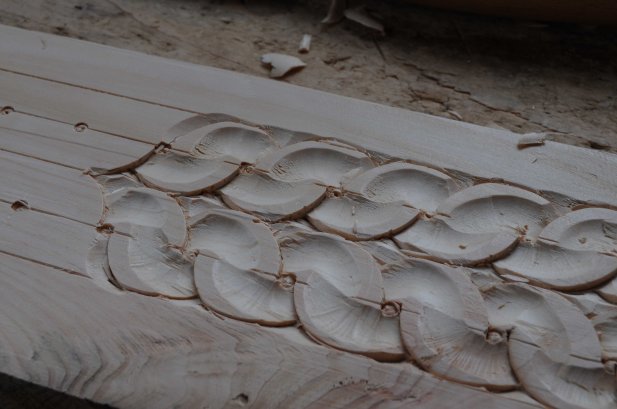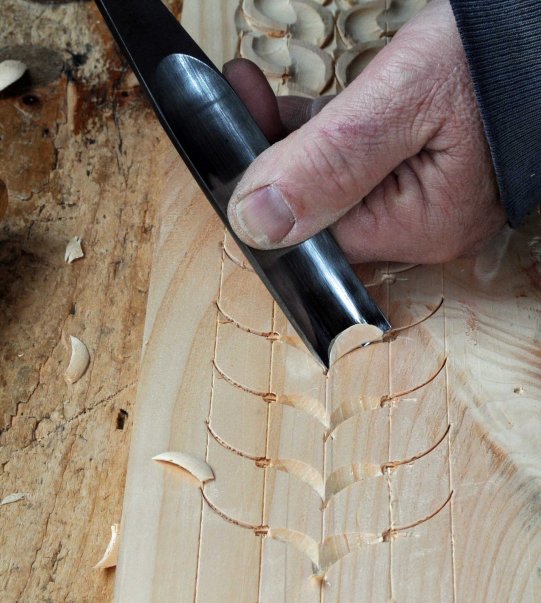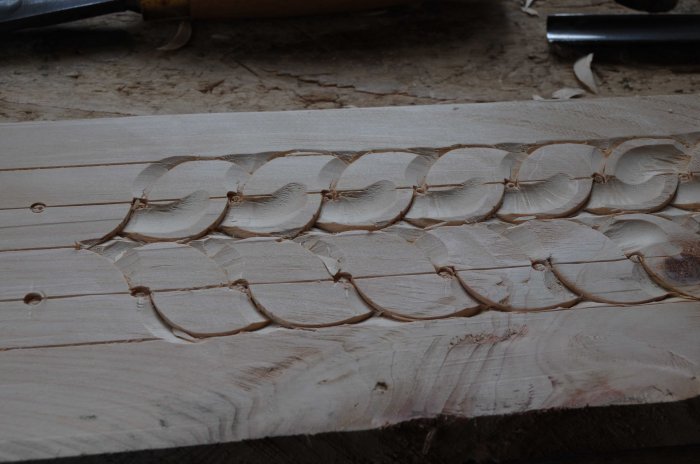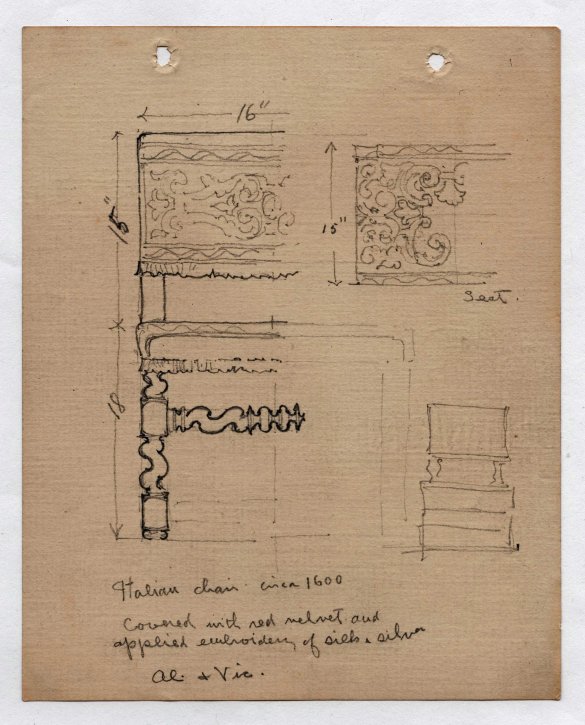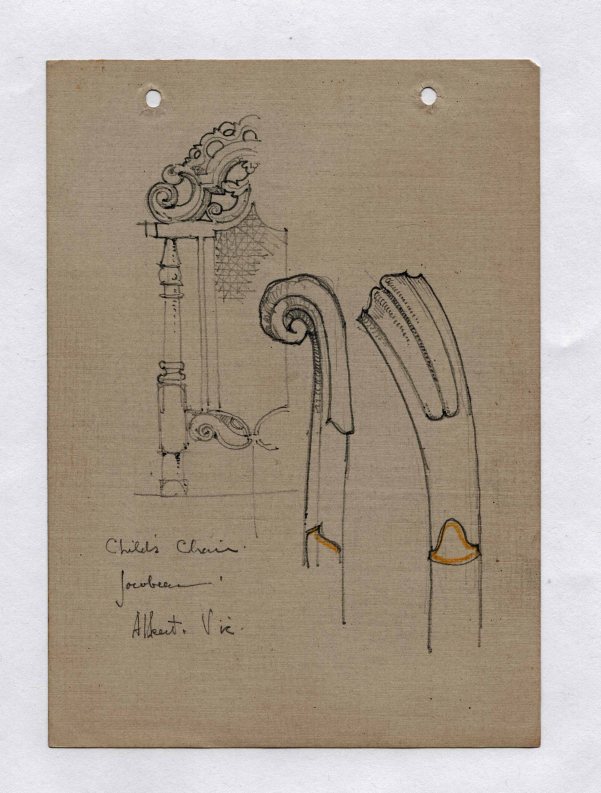more pictures. the floor to the shop is more than 2/3s done, today I moved the main tool chest into place. I made this chest after Chris Schwarz’ book came out about his tool chest. There are links at the bottom of this post about building it, and painting it.
I took some photos as I put some of the tools back inside. Here is the chest in its new place, to the right of my workbench.

when I fitted the interior drawers, the runners I made were leftover carvings. Perfect quartered oak.

the bottom drawer is the deepest, has some backsaws & a plane on one end…
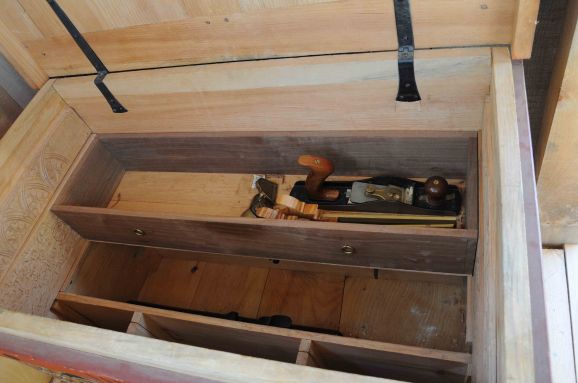
and a box-within-a-box of gouges on the other. Back in 2012 when I made this chest, I had cut some dovetails, but not enough to get efficient. This chest and its related tool trays/boxes got me plenty of practice. Here are the bowl-gouge boxes – the small one fits into the larger, deeper one:


and then the whole thing fits into the deep tray in the chest:

shallower trays go above this one. Starting with this chisel-tray. Some spokeshaves in it are bound for new placement soon…once I finish working on the shop.
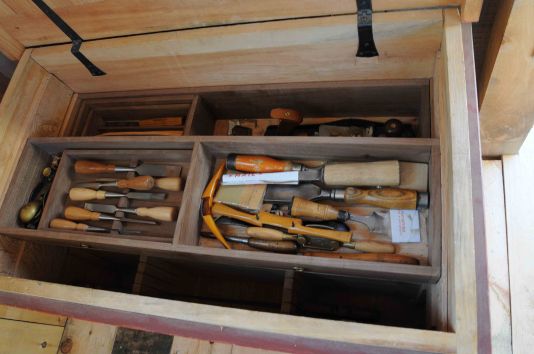
my main carving gouges go in the top tray, along with some small stuff that fits there alongside them…

molding planes went in before the trays – bench planes will fit in the front floor…

There’s a saw till in front, this Disston saw, made for A.J. Wilkinson Co, sits in there, with others…


Later, I added some junk to the underside of the lid – marking tools, squares, some bits:

Like this:
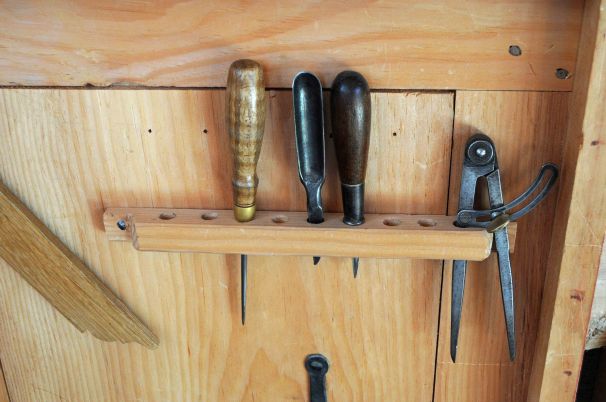
Then, the door-hanger came, so I switched gears. More later. Tomorrow, threshold and spandrels.

I mostly watched, as Pret hung the door. so I got out the camera & shot some raking light…

and Daniel’s sign he put on the shop’s peak:

It was going to say “Workshop” but he ran out of room…

Here’s more about the chest, back when I was making it.
https://pfollansbee.wordpress.com/2012/02/01/slow-going-on-the-paint-work/
https://pfollansbee.wordpress.com/2012/01/18/a-solution-to-too-much-blank-space/
https://pfollansbee.wordpress.com/2012/01/19/another-day-of-painting/
https://pfollansbee.wordpress.com/2012/01/12/it-was-the-rust-that-got-me/












